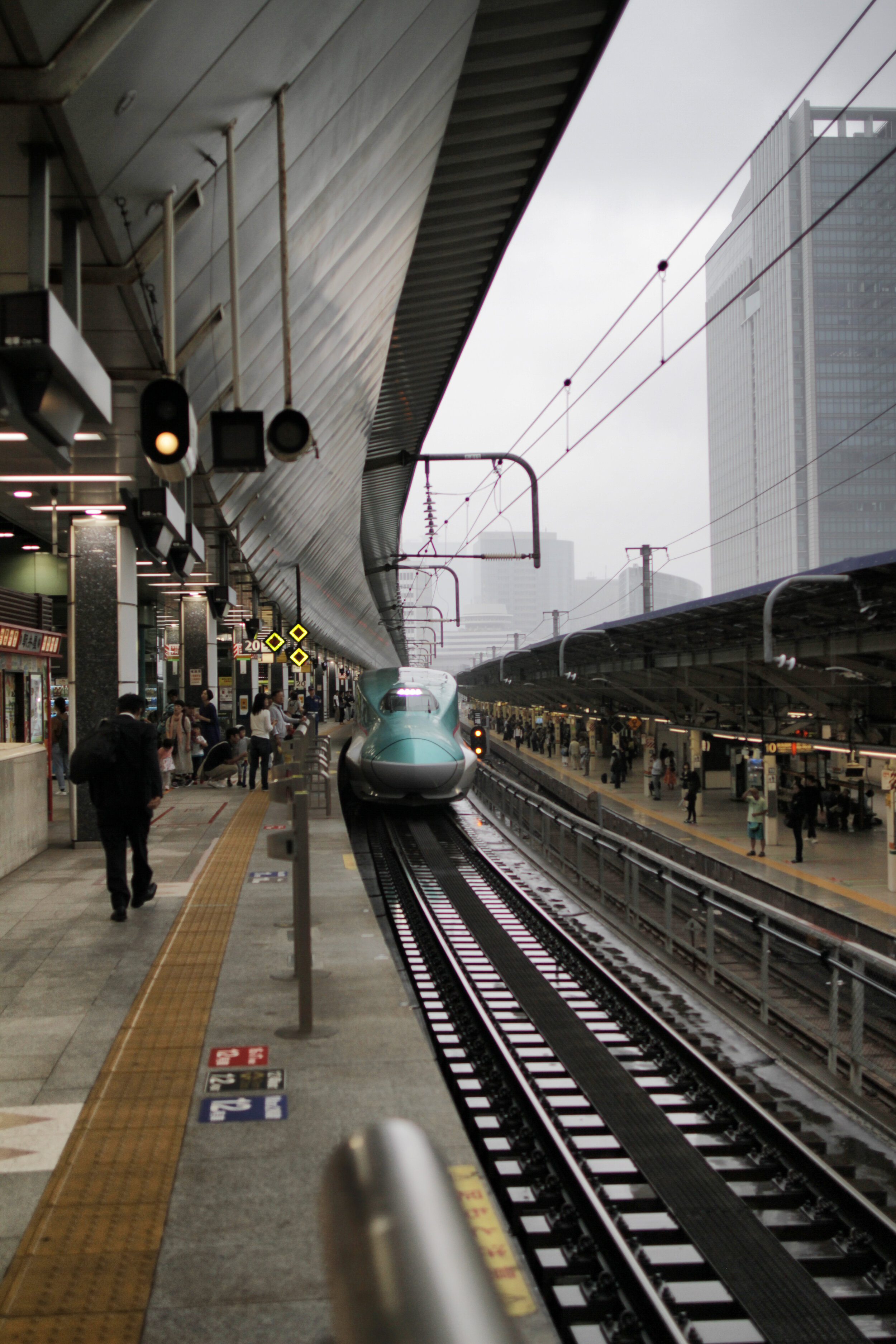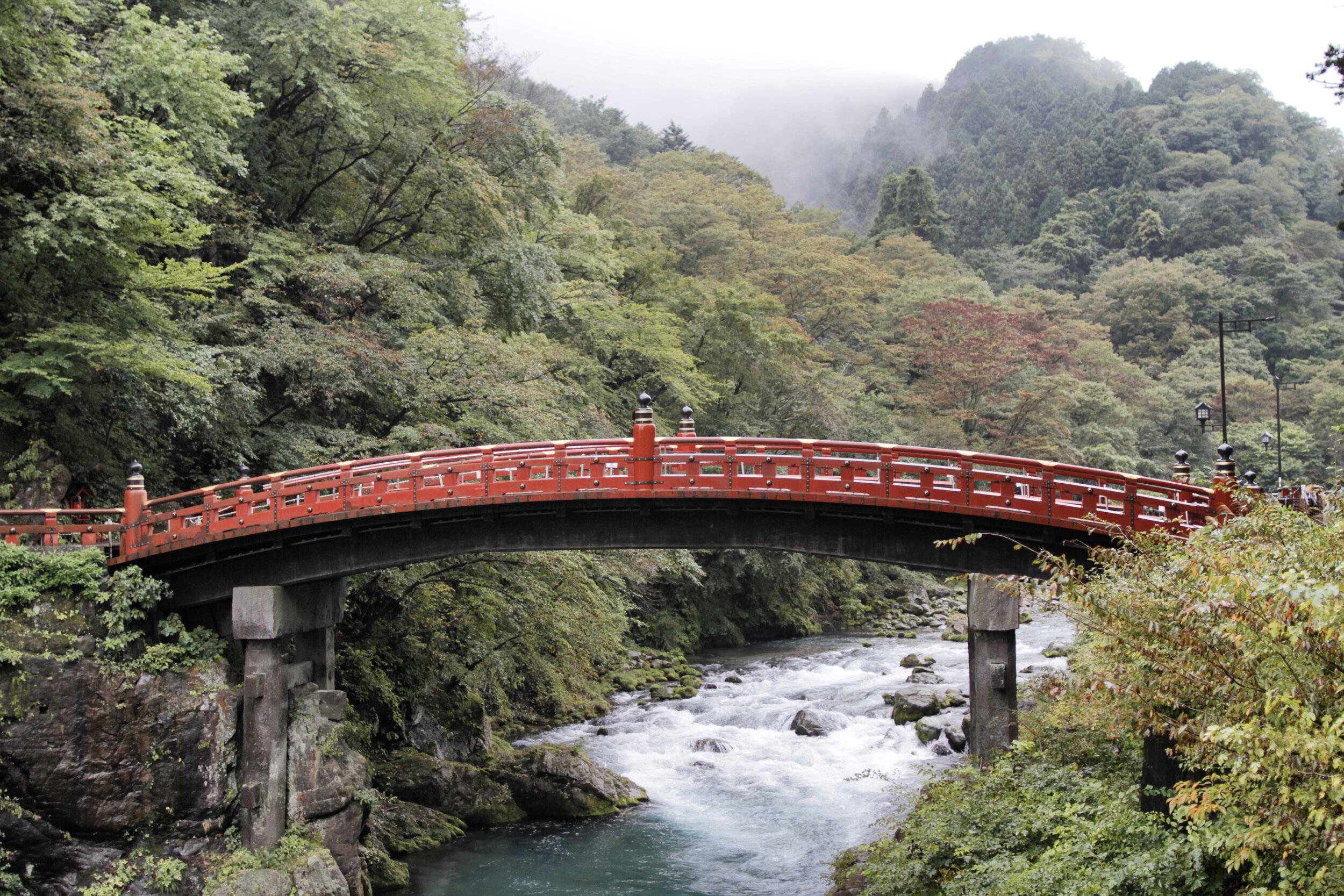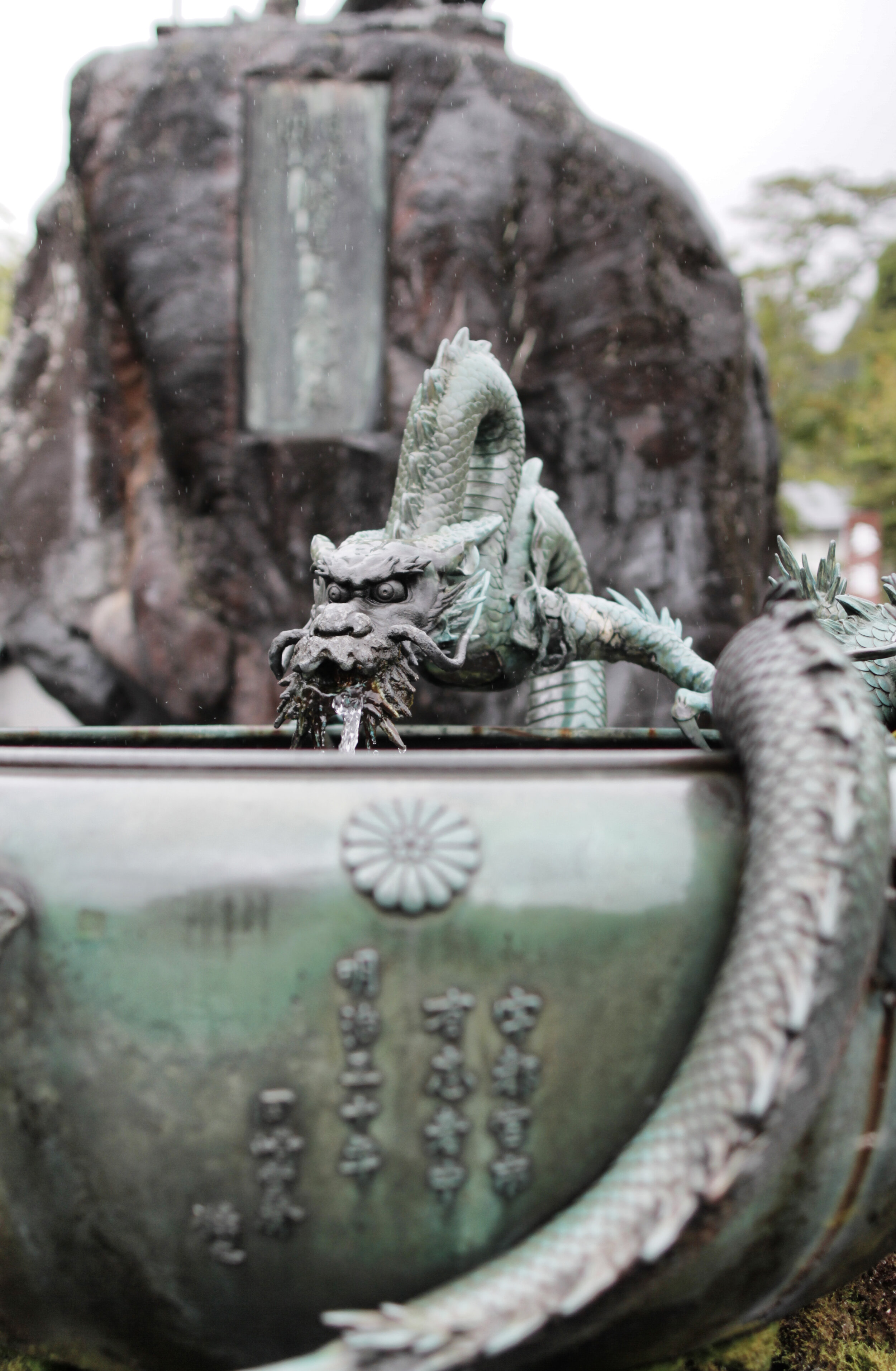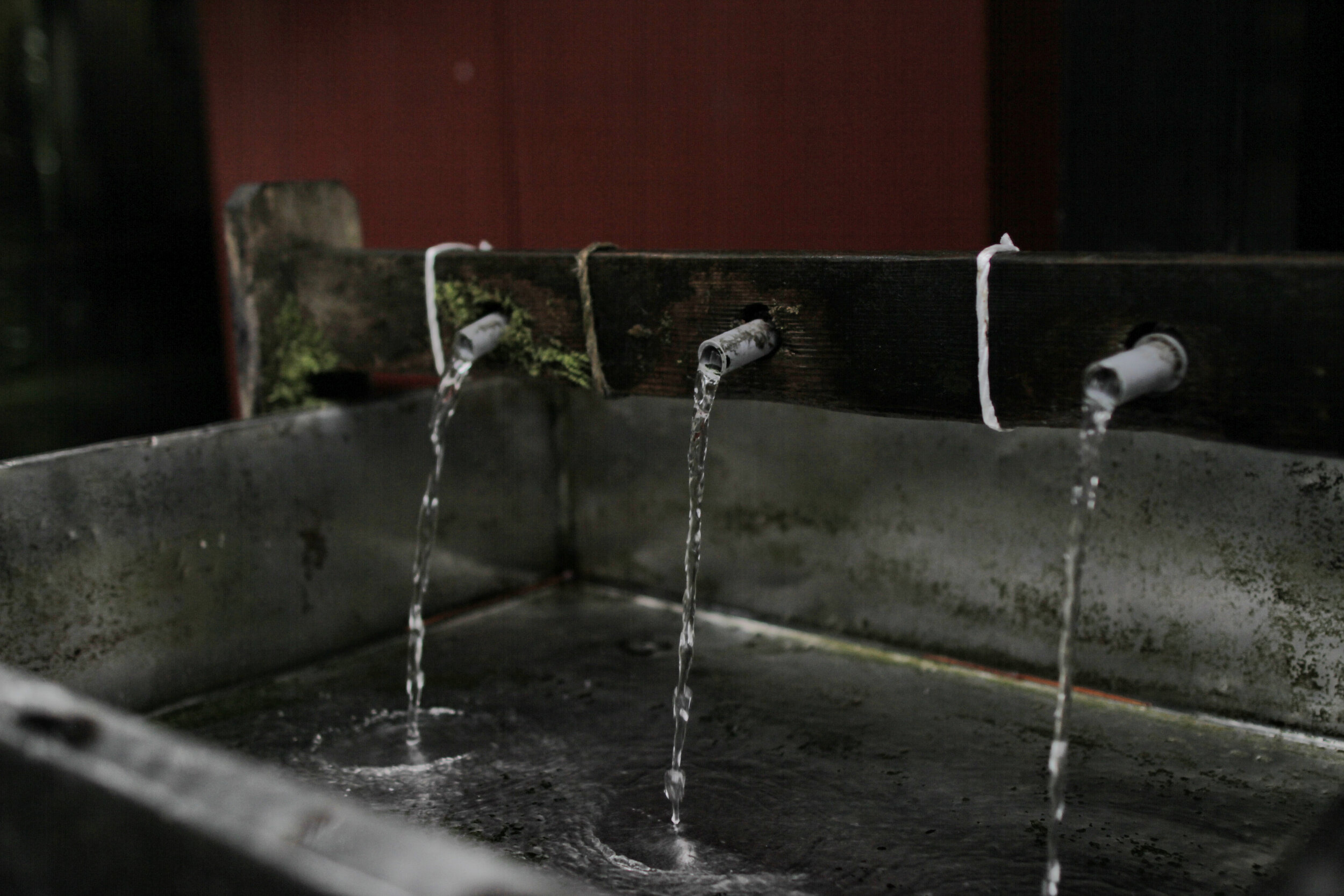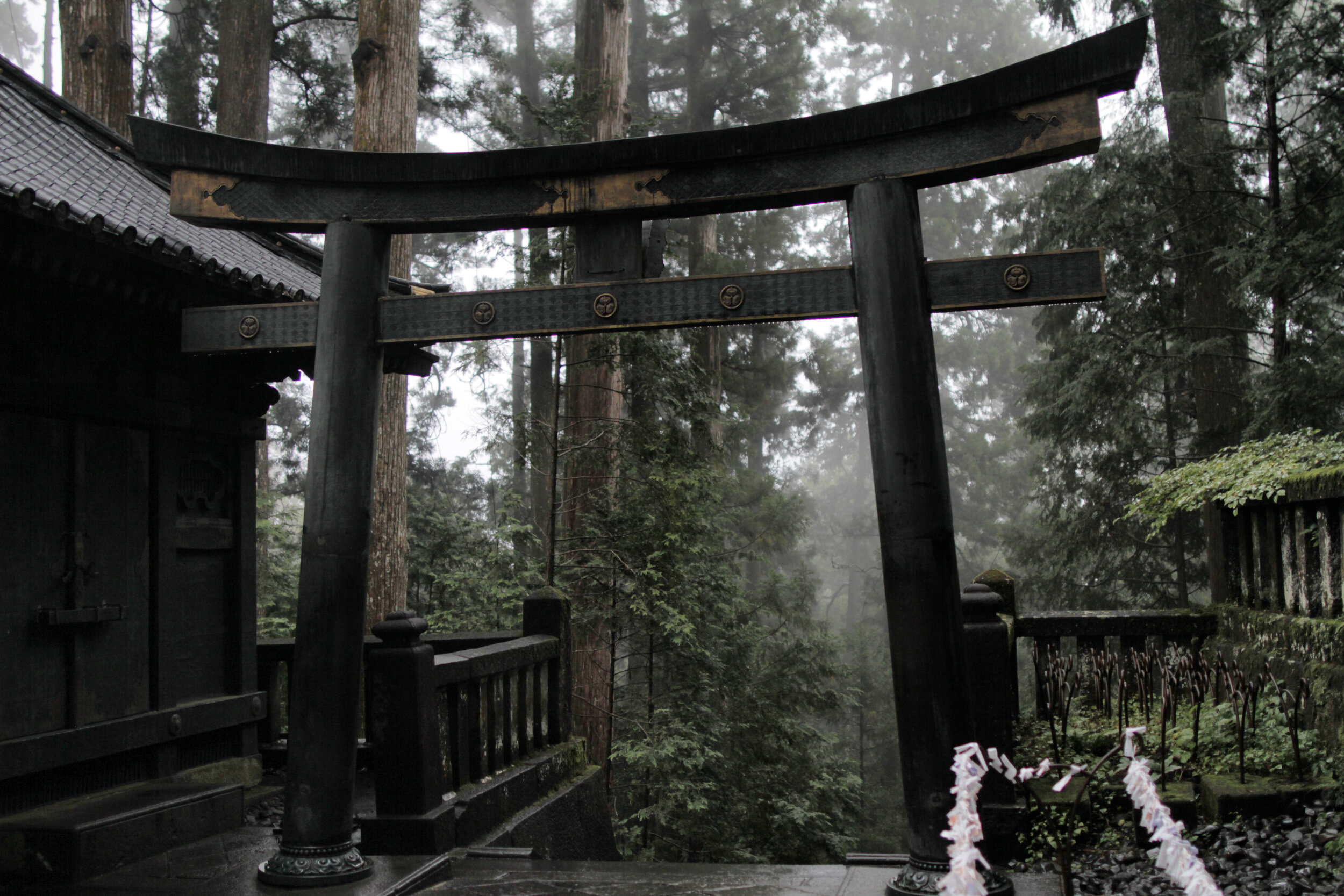Mountain Worship Deep in the Forests of Nikkō
Best things to do in Nikkō: discover sacred shrines & temples nestled among the forest with this travel guide.
Though known for breathtaking views of Mount Fuji, pink cherry blossoms and steamy hot springs, Japan has so much more to offer than stunning landscapes.
It’s a land of incredible creativity and advanced technologically, with inventions like karaoke and vending machines, popular anime and manga. Japan is also home to a powerful military, high speed bullet trains and several successful car manufacturers.
Culturally, Japan values politeness and punctuality and offers unlimited amounts of delicious snacks like ramen, sushi and a wide variety of sweet treats such as ice cream, tea, cakes, buns, breads, mochi and so much more.
Nikkō is a small city along the Daiya River in Japan’s Tochigi Prefecture, set among the misty mountains north of Tokyo.
The area has long been a center of Shinto and Buddhist mountain worship with many important temples and shines including UNESCO World Heritage Site, Toshogu Shrine.
With Nikkō National Park as the highlight, visitors can become one with nature while nourishing their spirit.
Highly anticipated, Japan is one of the most mountainous and densely populated countries I’ve ever seen and just as challenging as I’d imagined. Even with tons of research and preparation, some of Japan’s rules were lost on me.
Tokyo, capital city and largest metropolitan in the world, was my first destination with a day trip into the rainy forests of Nikkō for some much needed mountain worship.
Next, it was on to the charming temples, gardens and geisha of Kyoto, with unforgettable visits to explore thousands of torii gates at Fushimi Inari Shrine, wander the emerald green bamboo forests of Arashiyama and admire the wild and curious deer of Nara Park.
Best Things to Do in Nikkō
Catch / A Train to the forested mountains of Nikkō
Witness / Shinkyō Sacred Bridge
Enter / Nikkō National Park
Explore / The countless shrines of Nikkō
Climb / 207 Stone Steps to the Inner Shrine
Depart / The forested mountains & snack on taiyaki
Best Things to Do in Nikkō
Catch a Train to the Forested Mountains of Nikkō
Waking at Kaisu Hostel in Tokyo, I rose early for a breakfast of toast, hard boiled eggs, banana and choice of coffee or juice which was more than enough to get my day started. My plan was to explore Nikkō, a lush mountainous city two hours north of Tokyo but first I had to stop by the Tokyo Train Station to exchange my Japan Rail Pass.
When my flight landed in Tokyo, I didn’t realize the airport is where most travelers “exchange” their Japan Rail Pass to activate it. However, at the time of exchange you must choose a start date and since my plans were up in the air, it was a good thing I didn’t activate it too early. With a seven day pass costing $300 USD, wasting it wasn’t an option. This morning, I had to go back to a large hub station to get my pass activated, making sure not to forget my passport.
Tip / It’s only possible to activate a Japan Rail Pass at a major station or the airport railway. Just note, once activated, the countdown begins immediately.
After activating my pass and a quick stamp, I was off to catch a bullet train toward Nikkō. Reservations aren’t needed since half of each train is first come first serve but if you’d like to reserve a seat, you may. Also, I learned pretty quickly that trains leave right on time or even 60 seconds early so make sure you’re on board with time to spare. Even though I had already been exploring Tokyo for a few days it was still quite overwhelming to figure out the system.
My first time on Japan’s bullet trains, excited and nervous, I jumped on hoping for the best. The first train took about an hour and then a transfer to a slower and smaller local train for the second half of the journey.
Back at the station, I made sure to purchase a snack of tonkatsu, fried pork cutlet with rice; take note of how beautifully packed Japanese lunch boxes are.
Witness Shinkyō Sacred Bridge
Once I arrived in Nikkō (日光), it began to rain quite heavily so instead of walking I boarded a tiny bus toward Nikkō National Park, most famous for Tōshōgū Shinkyūsha, Japan’s most lavishly decorated shrine, as well as the mausoleum of Tokugawa leyasu, the founder of the Tokugawa shogunate, a military government of Japan during the Edo period from 1603 to 1868.
In total, the Shrines and Temples of Nikkō UNESCO World Heritage Site encompass 103 buildings or structures, and include the nature surrounding them. The buildings belong to two Shinto shrines, the Futarasan Shrine and Tōshōgū, and one Buddhist temple, Rinnō-ji.
Upon reaching the top of the hill, the Sacred Bridge or Shinkyō (神橋) came into view. It belongs to the Futarasan Shrine and stretches across the Daiya River. The red lacquered bridge is one of the three most beautiful bridges in Japan and is set against a stunning background, offering a perfect gateway to Nikkō.
The Shinkyo has been rebuilt many times but has always followed the same design since 1636 when it was only used by messengers of the Imperial court. It was opened to the general public in 1973.
Enter Nikkō National Park
The day was slippery and soggy but the enormous trees surrounding the area made the trek pretty remarkable in itself.
Stone steps glistened in the rain as I carefully climbed one by one. Suppose the storm may have lessened the crowds but the temples and shrines were still quite busy, littered with visitors as far as the eye could see.
At the top, I reached a wooden arch called a torii or gateway to the Shinto shrine. A torii gate is made with two uprights and two crosspieces and feels quite magical when passing underneath.
Just a little further is Toshogu Gojunoto, a five-story pagoda built in 1818 which replaced the original from 1650 after burning down in 1815.
Explore the Countless Shrines of Nikkō
Then, stumble upon the Shimojinko or storehouse which is included as part of the 42 buildings of the Tōshō-gū shrine. Eight of the structures are registered as National Treasures of Japan and 34 are Important Cultural Properties.
A sculpture on the upper section of Kamijinko was made after a painting by Kanō Tan’yū, one of the earliest Japanese painters dating back to the 17th century. It represents two animals called “imaginary elefants” because the painter had never seen an image of a real elephant. Instead, he painted by reading a description from a book.
Each step offered something new and special inside the grounds, especially in the cool rainy weather. Most of all, I enjoyed the lush green surroundings paired against the brightly painted structures and the peaceful crackles and sways of the wet forest.
The Sacred Stable was home to the horse that Lord Tokugawa Ieyasu rode during the Battle of Sekigahara in 1600 unifying Japan under this rule. This is the only undecorated wooden building at the location and is divided into two parts; one for the horse and another space for its handler.
Shinkyu, the stable, is famous for its freeze of monkeys that teach others how to lead an ideal life. One of the eight panels show children to, “See no evil, speak no evil, hear no evil”.
Another set of steps lead up to Yomeimon Gate, featuring intricately carved reliefs and colorful paint.
Yomeimon Gate is the most decorated gate in Japan with 508 carvings of dragons, flying horses and other mythical beasts on the upper portion and carvings of people on the lower levels. The carvings praise Lord Tokugawa Ieyasu for creating a time of peace and prosperity in Japan.
There’s also one pillar at the back of the gate that lies upside down. It’s said this was done on purpose so the gate would not be considered complete, as completion invites bad luck.
Climb 207 Stone Steps to the Inner Shrine
The Stone Steps and Balustrades are a series of 207 stone steps leading up to the Inner Shrine. Each step was paid special care, carved of a single block of stone. Moss covered the handrails and surrounding surfaces so delicately. It was so peaceful, calming even, climbing those steps, slowly ascending into the fog and greenness of the forest.
At the top of the climb I reached another torii gate and eventually Nikkō Futarasan Shrine or Futarasan jinja (二荒山神社). Little white papers tied to chains wish for good luck, pregnancy and marriage.
Along with fountains spilling fresh water used for drinking and cooling off.
The Inner Shrine Pagoda holds Lord Tokugawa Ieyasu beneath and is made of precious materials including gold, silver and copper. It was built in 1683 to replace the first wooden and later stone versions. The grave has never been opened since Ieyasu entered in 1617.
After a few moments welcoming the foggy views of the surrounding forest I began the trek back down the steps.
One of the most memorable carvings at this site is Nemuri-neko, or the Sleeping Cat, found at the entrance to the rear shrine. The carving is accredited to Hidari Jingorō, a legendary 17th century artist. And although only eight inches in size, the Sleeping Cat has a few interesting features. First, cats are rarely found in reliefs of shrines or temples like other animals such as the crane, turtle, tiger, dragon or phoenix. Second, a pair of sparrows lie on the side of the Sleeping Cat which is unusual as cats eat sparrows. In this case, it may represent peace and safety.
The Revolving Lantern which begins to turn when the candles are lit was a gift to the Shrine from the Dutch in 1636.
Depart the Forested Mountains & Snack on Taiyaki
Leaving the beautiful shrine and quiet forest, I felt calm and peaceful even though I was soaked through. Passing the red bridge, I decided to walk back to the train to get a better feel for the tiny little town of Nikkō. On the way, a shop called Soppo served freshly pressed hot red bean fish-shaped cakes called taiyaki. It was warm and tasty, just what I needed.
Arriving every hour on the hour, I barely made it on to the small local train and then transferred to another, reaching Akasaka Station near my hostel back in Tokyo. Noodles were on my mind! Then, I had one last night before heading off to the mind-blowing city of Kyoto.


